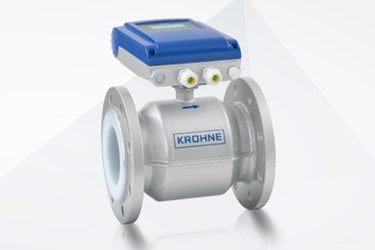OPTIFLUX 4100 Electromagnetic Flowmeter

The OPTIFLUX 4100 is an electromagnetic flowmeter (EMF) for a wide range of standard process applications with aggressive and abrasive liquids. It enables reliable flow measurement even under harsh process conditions with temperatures up to +180°C / +356°F, low conductivity (≥5 µS/cm) and solid content (up to 10%). This makes the flowmeter particularly suitable for applications involving corrosive chemicals, sewage and drilling mud or mining sludge. Installation in measurement chambers subject to (constant) flooding is also possible using the optional IP68 / NEMA 6P rated version.
Unlike the basic version OPTIFLUX 4050, the OPTIFLUX 4100 features higher accuracy. It comes with a selection of chemically resistant liners and electrodes. Due to its full bore design without moving or intruding parts, there is no pressure loss and no maintenance required. A full on-site verification of the flowmeter without process interruption can be carried out using the OPTICHECK service tool.
Product highlights
- Bi-directional flow measurement over a wide dynamic range (turndown ratio: 1000:1)
- PTFE, PFA, ETFE, hard rubber, soft rubber or PU liner: excellent chemical and abrasion resistance
- Wide range of electrode materials
- Special designs, sizes, inner diameters and liner thicknesses on request
- Standard measurement accuracy: ±0.3% or ±1mm/s of measured value (MV)
- Optional external coatings for offshore or subsoil installation (also acc. to ISO 12944)
- Diagnostics incl. conductivity, electrode error, ambient and process temperature etc.
- Full bore design: No moving parts, no wear, no pressure loss
- On-site verification of flowmeter with OPTICHECK service tool
Typical applications
General
- Standard applications with clean, aggressive or abrasive liquids
Chemical and other process industries
- Conductive fluid chemicals
- Process water, cooling water
Oil and gas industry
- Water injection (high pressure)
- Drilling mud
- Produced water
Minerals and mining industry
- Hydrocyclone feed lines
Pulp and paper industry
- Chemicals (black liquor, bleach, etc.)
Wastewater industry
- Irrigation
- Sludge and sewage treatment
